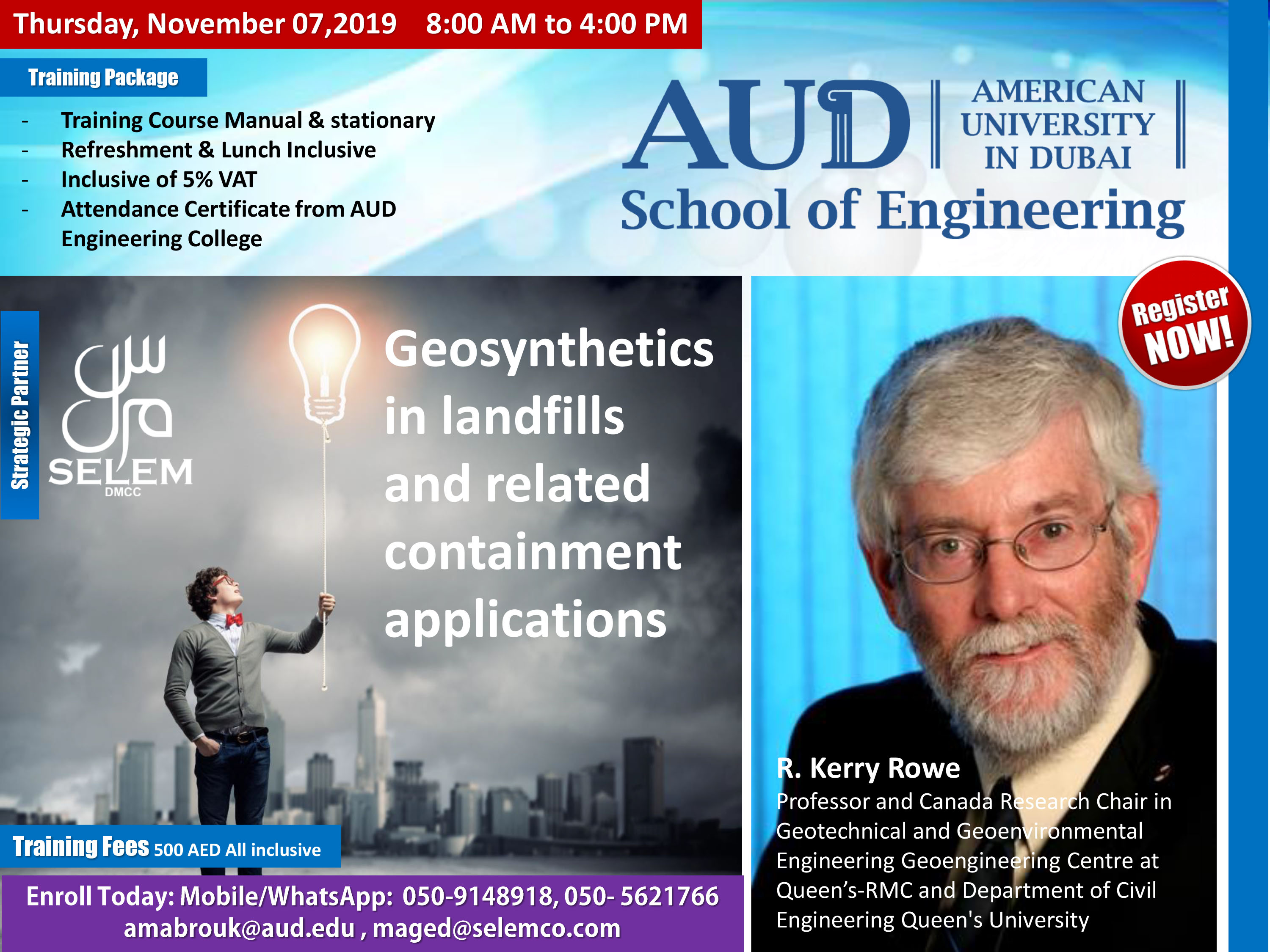1 Introduction – basic concepts
§
Objectives and limitations
§
Theme
§
Materials used liners and drainage layers
§
Example applications
§
Cover systems
§
Barriers systems
§
Transport mechanisms for liquids and gases
§
Temperature
2 Drainage layers and Leachate Collection Systems
•
Geosynthetic drainage layers
•
Long term performance of leachate collection systems
•
How to use (and NOT use) geotextiles in LCS systems
3 Geosynthetic Clay liners (GCLs)
•
Factors affecting long-term performance
•
Effect of method of GCL manufacture
•
Hydration and Hydraulic conductivity of GCLs
o
Effect of stress
o
Cation exchange
o
Compatibility – hydraulic conductivity
•
o Internal erosion
•
Overlaps
•
Diffusion through GCLs (aqueous)
•
Gas migration through GCLs
4 HDPE Geomembranes (GMBs)
•
Material characteristics
•
Processes affecting short-term performance- leakage
•
Long-term performance
o
Factors affecting long term performance
o
Conventional immersion tests – MSW [OIT]
o
Effect of GMB thickness [OIT]
o
Service life for GMB in MSW
o
Service life of secondary GMB in MSW
o
Effect of temperature history on SL for MSW
•
Diffusion through GMBs
5 Composite liners performance and issues
•
Diffusion through composite liners
•
Protection of composite liners
•
High stresses – heap leach pads
•
GM wrinkling/waves
•
Temperature effects on CCLs and GCLs in composite liners (shrinkage and desiccation)
•
Leakage through composite liners
•
Effect of composite liner
behaviour
on GM service life
6 Contaminant transport predictions/modelling
7 Equivalency of GCLs and CCLs
8 Stability
•
General Stability considerations
•
Some properties
•
Liner stability
•
Veneer/cover stability
9 Construction Issues
10 Conclusions

